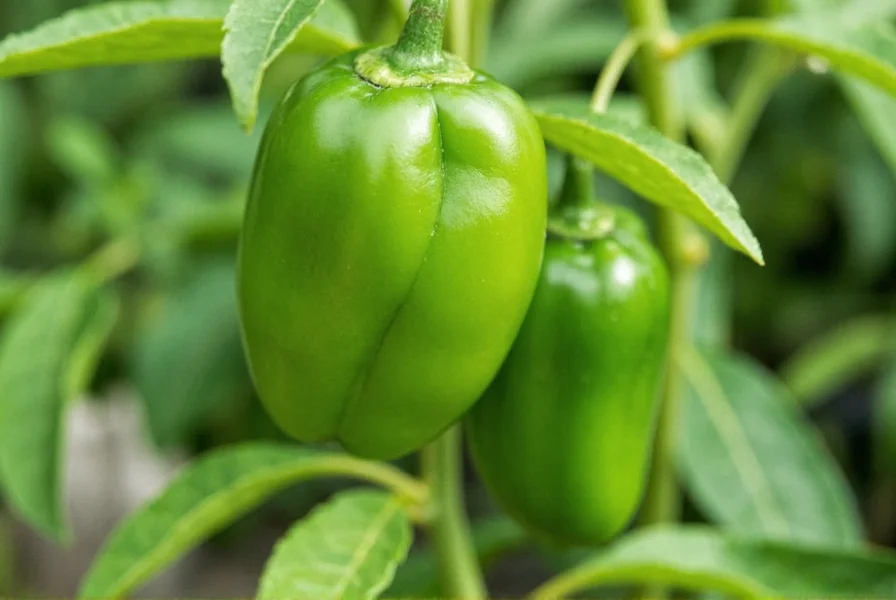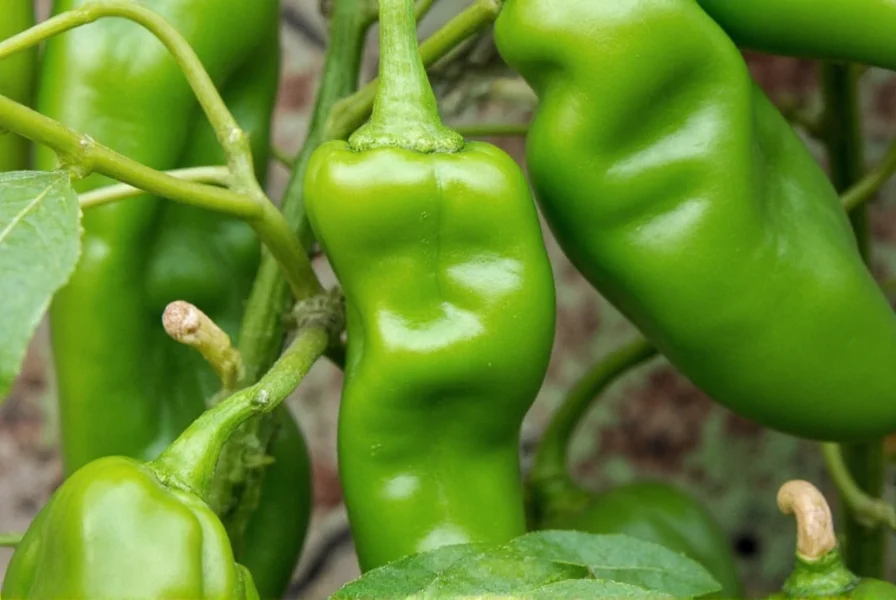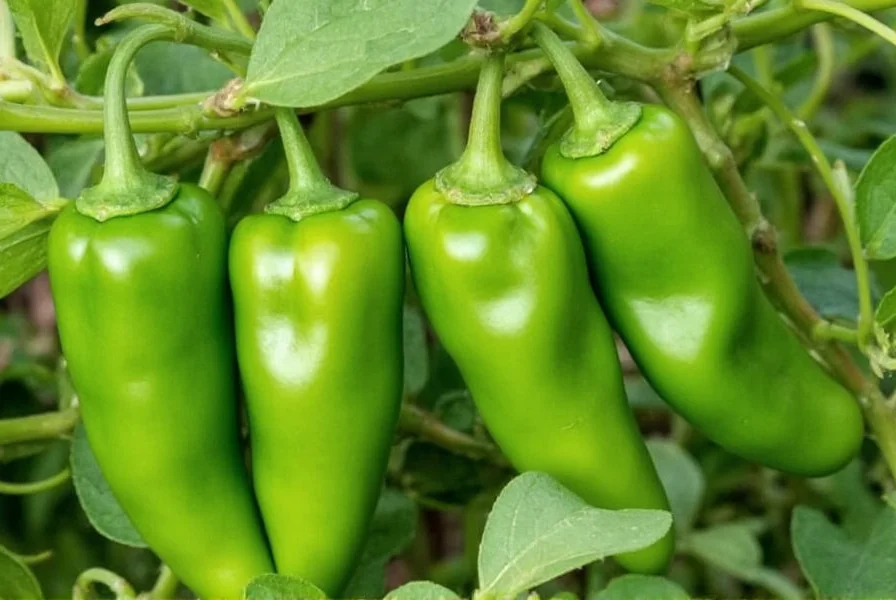Serrano peppers (Capsicum annuum) are prized for their bright heat and crisp flavor, making them a staple in Mexican cuisine. Understanding their ripening process ensures you harvest at peak flavor and heat levels. Unlike some peppers that must fully change color, serranos are commonly harvested while still green but have reached full size and developed their characteristic glossy sheen.
Visual Indicators of Serrano Pepper Ripeness
The most reliable visual cues for determining serrano pepper ripeness include:
- Size: Mature serrano peppers typically measure 1-4 inches long and about 0.5-1 inch in diameter
- Color: While most commonly harvested green, they gradually transition to red, orange, or yellow as they fully mature
- Texture: Ripe peppers have a smooth, glossy skin rather than a dull appearance
- Firmness: They should feel firm and substantial when gently squeezed
- Stem attachment: The stem should appear healthy and green, not dried or withered

Serrano Pepper Ripening Timeline
Understanding the growth stages helps determine when to pick serrano peppers for your preferred flavor profile:
| Growth Stage | Days After Transplanting | Pepper Characteristics | Flavor Profile |
|---|---|---|---|
| Immature | 50-60 days | Small (under 1 inch), very dark green | Mild heat, grassy flavor |
| Optimal Green | 70-80 days | 1-4 inches, bright green, glossy | Full heat (10,000-23,000 SHU), crisp flavor |
| Partially Ripe | 85-95 days | Beginning color change (green to red) | Slightly sweeter, complex heat |
| Full Color | 100-120 days | Completely red, orange, or yellow | Sweetest, milder heat, fruity notes |
How Climate Affects Serrano Pepper Ripening
Temperature and sunlight significantly impact the serrano pepper maturity timeline. These peppers thrive in warm conditions with consistent temperatures between 70-85°F (21-29°C). In cooler climates, the ripening process slows considerably, potentially extending the time to harvest by 2-3 weeks.
Excessive heat (above 90°F/32°C) can cause blossom drop and slow fruit development. In regions with intense summer heat, providing afternoon shade can help maintain consistent ripening. Serranos require at least 6-8 hours of direct sunlight daily for optimal development.
Green vs. Red Serrano Peppers: Flavor and Heat Differences
Many gardeners wonder about the differences between green and red serrano peppers. The color change represents different ripeness stages with distinct flavor profiles:
- Green serranos: Harvested before full maturity, these offer the classic serrano heat (10,000-23,000 SHU) with bright, grassy notes. They're firmer and preferred for fresh salsas and raw applications.
- Red serranos: Fully mature peppers develop sweeter, more complex flavors with slightly reduced heat (8,000-18,000 SHU). The flesh becomes slightly softer, making them better for roasting and cooking.
The heat level decreases slightly as serranos mature because capsaicin (the compound responsible for heat) breaks down while sugars develop. However, red serranos still pack significant heat compared to milder varieties like jalapeños.
Harvesting Techniques for Perfectly Ripe Serranos
Proper harvesting ensures your plants continue producing throughout the season. When determining how to tell when serrano peppers are ripe and ready for picking:
- Examine multiple peppers on the plant - don't harvest based on a single specimen
- Look for the glossy sheen that indicates maturity
- Gently tug the pepper upward - ripe peppers should detach relatively easily
- If resistance is felt, use sharp scissors or pruning shears to avoid damaging the plant
- Harvest regularly to encourage continued production

What Happens If You Leave Serranos on the Plant Too Long?
While serrano peppers can remain on the plant after reaching peak ripeness, several issues may develop if left too long:
- Overripening: Peppers may become wrinkled, soft, or develop dark spots
- Reduced production: The plant focuses energy on existing fruit rather than producing new flowers
- Increased pest vulnerability: Overripe peppers attract insects and rodents
- Cracking: Fully mature peppers may split, especially after rain
- Plant stress: Excessive fruit load can weaken the plant
For continuous harvest, pick serranos as they reach your preferred ripeness stage. Regular harvesting signals the plant to produce more flowers and fruit.
Can Serrano Peppers Ripen After Picking?
Unlike tomatoes, serrano peppers have limited ability to continue ripening off the plant. While green serranos may develop slightly more color when left at room temperature, they won't significantly increase in sweetness or change their fundamental flavor profile.
For best results with harvested green serranos:
- Store at room temperature (65-75°F/18-24°C) away from direct sunlight
- Expect minimal color change over 3-5 days
- Refrigeration halts the ripening process completely
- For fully red peppers, it's best to allow them to mature on the plant
Common Mistakes in Determining Serrano Pepper Ripeness
Gardeners often make these errors when assessing serrano pepper ripening stages:
- Harvesting too early: Picking peppers before they reach full size (under 1 inch)
- Misjudging color: Expecting all serranos to turn red (some varieties stay green)
- Ignoring texture: Not checking for the characteristic glossy sheen of ripeness
- Overlooking plant signals: Failing to notice slowed production indicating overripe fruit
- Using size alone: Not accounting for variety differences in mature size
Understanding your specific serrano variety's characteristics is crucial for accurate ripeness assessment. Some heirloom varieties may have different size ranges or color progression than standard commercial types.
Storing and Using Ripe Serrano Peppers
Once harvested at peak ripeness, serranos can be stored:
- Refrigeration: 2-3 weeks in a perforated plastic bag in the crisper drawer
- Freezing: Whole or sliced for 6-8 months (blanching preserves texture)
- Drying: Creates potent dried peppers for powder or rehydration
- Pickling: Preserves the bright flavor for 6+ months
Green serranos work best in fresh salsas, guacamole, and as a garnish, while red serranos shine in cooked applications like sauces, stews, and roasted dishes where their sweetness can develop.
How long after flowering do serrano peppers ripen?
Serrano peppers typically begin ripening 30-40 days after flowering. The initial green peppers reach harvestable size about 50-60 days after transplanting, with full maturity (red/orange/yellow) occurring 70-120 days after transplanting depending on growing conditions and variety.
Do serrano peppers get hotter as they ripen?
No, serrano peppers actually become slightly milder as they fully ripen and change color from green to red. Green serranos contain the highest concentration of capsaicin (10,000-23,000 SHU), while fully red serranos range from 8,000-18,000 SHU. The heat decreases slightly as sugars develop during the ripening process.
Can you eat unripe serrano peppers?
Yes, serrano peppers are most commonly harvested and eaten while still green (technically immature). These green peppers have a bright, grassy flavor and maximum heat. Truly unripe peppers (very small and extremely dark green) may be too bitter, but standard green serranos at 1-4 inches are perfectly edible and preferred for many culinary applications.
How do I know if my serrano peppers are overripe?
Overripe serrano peppers show several signs: wrinkled or soft skin, dark spots or discoloration, a dull appearance instead of glossy, and sometimes cracks or splits in the skin. They may feel lighter than firm, ripe peppers of the same size. While still edible if only slightly overripe, severely overripe peppers lose their crisp texture and optimal flavor.
Should I let serrano peppers turn red on the plant?
Whether to let serrano peppers turn red depends on your flavor preference. Green serranos offer brighter heat preferred for fresh applications, while red serranos provide sweeter, more complex flavors better for cooking. Leaving peppers to turn red reduces overall plant productivity, as the plant stops producing new flowers while ripening existing fruit. For continuous harvest, pick most peppers green and allow a few to fully mature.











 浙公网安备
33010002000092号
浙公网安备
33010002000092号 浙B2-20120091-4
浙B2-20120091-4